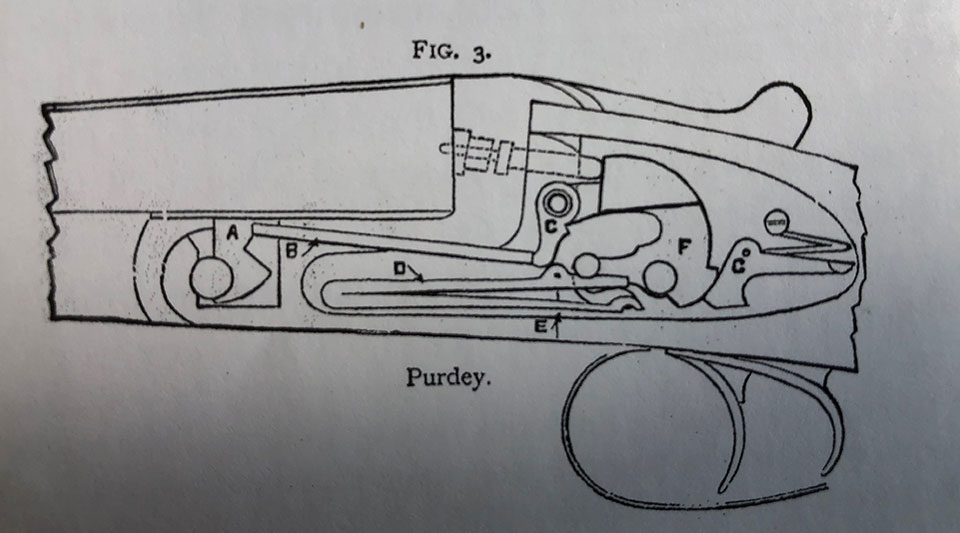To think of Purdey is to think of the quintessential English side-by-side; a self-opening hammerless action which has been in continuous production for nearly one hundred and forty years. The design was the first produced by the inventive genius of Frederick Beesley, a man who went on to earn a reputation as being the inventor to the London Gun Trade. But the story of how he developed the action, and how he sold it to Purdey, has been the subject of much confusion and rumour over the last forty years.
Frederick Beesley joined James Purdey, as it then was, in 1869 as a stocker. Although there have been various stories as to how and when he left the company, the wage books record him as having left without issue in May 1878. It has long been assumed that this was the start of his eponymous company, but in fact he reappears in the wage ledger in June 1879, and remained with the company for a full year. This means that he was actually drawing a weekly wage from the company when he invented the action. However, when he offered his design to James Purdey the Younger on 18 December 1879, Beesley did so from his own address and with no hint that he was already working for James.
James the Younger was a trained stocker and successful inventor in his own right, and was apparently convinced of the merits of the design. By 2 January 1880 the two men had signed a provisional agreement, which set out their roles in patenting the design. Under these terms, Beesley was to undertake all the design and descriptive work necessary for securing the patent. In return, James not only took on all costs and risks associated with the process, but paid Beesley four sums once significant stages had been passed. The first of these was the registration of the patent, which happened the same day and for which Beesley got £20.
The second payment of £10 was to be made once Beesley turned over a working model of the design, together with the drawings necessary for the patent specification. He received an advance of £3 on 11 March, with the full amount paid on 3 May. As such, we can assume that the second milestone had been passed to James’ satisfaction by that date. The third sum became due once the patent was sealed, which took place on 29 July. On that day Beesley signed an indenture which transferred the rights to the patent to James Purdey, and in return received £20. The Indenture also laid out an agreement for royalties: 5 shillings per gun on the first two hundred made, or a lump sum of £35 provided this was paid by 29 November. Beesley acknowledge receipt of the £35 on 16 November, meaning that he received the total sum of £85 for his invention.
As noted above, this was not all that Beesley received from Purdey. His wages for his final year there amounted to a little over £134, meaning that he earned £219 up until he left the company again at the end of June 1880. According to his granddaughters, this helped to secure his business. It is also worth considering the costs that Purdey bore, above those paid directly to Beesley. Registration of the patent cost another £50 plus fees, and the upkeep of the patent, as well as defending it, cost significantly more. Although the Purdey records have some gaps, there are invoices spread over a fourteen-year period totalling around £190. It seems reasonable to estimate Purdey’s total investment in the patent itself at nearly £250, not including payments made to Beesley. Given his granddaughters comments, Beesley’s company may have struggled to bear those costs alone during its formative period.
Having reviewed the surviving records held at Audley House, Beesley’s departure from Purdey in 1878 was of his own free will, rather than being dismissed for poor behaviour. Perhaps struggling for work, he returned to his former employer much earlier than previously thought, and whilst there developed and sold his first patent. The money he raised in doing so, together with the liabilities that James the Younger took on as part of the agreement, gave him the capital to set up his company on better terms, and create the name that survives today. Frederick Beesley went on to patent another twenty designs, and remained involved in the gun trade almost until his death in 1928. In return for his investment, James the Younger purchased an action that has become synonymous with his company, and which continues to define the ideal of a London side-by-side gun to this day.

Published by Vintage Guns Ltd on (modified )




